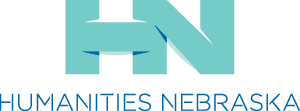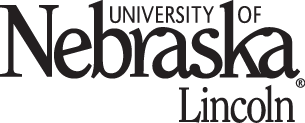
RESISTANCE: SIMONE SAVES REFUGEE CHILDREN
One day late in 1941, I got a letter from someone I had known in Strasbourg, Andrée Salomon. She was a member of OSE, a French Jewish children’s relief organization.* OSE had set up children’s homes around Paris in the late 1930s to care for Jewish children from Germany and Austria whose parents had sent them to safety in France. After the German invasion of France in 1940, the homes were moved to the south of France. By 1941 OSE was taking care of several hundred Jewish children in 16 homes. OSE workers were trying to help families detained in French internment camps get their children out of these camps and into homes for children. Andrée asked me to come at once to an internment camp in Rivesaltes where many foreign-born Jewish families deported from the Rhineland [German region on the border with France], Belgium, and Holland were being held.
So I packed my bags and came. I was 21 years old. I had no idea what to expect at Rivesaltes.† I hadn’t even known these camps existed. I was shocked at the conditions there. People were malnourished, inadequately clothed, and living in filthy rat-infested quarters. We set up infirmaries, clin-ics, and nurseries, and created programs for children and teenagers.
Children cared for by OSE in the Rivesaltes transit camp, southwest France, 1942
A girl scout troop that Simone formed in Rivesaltes, 1942
A boy scout troop that Simone formed in Rivesaltes, 1942

Rivesaltes transit camp, 1942
By August 1942, buses and trucks unloaded their human cargo daily at the internment camps. Rivesaltes became a central collection point for deportations. People were told they would be sent to work camps, but that wasn’t true. The trains went to the death camps in Poland. At this time, some Jews could still escape deportation, depending on their nationality, date of arrival in France, service in the French army, and a few similar factors. For example, Jews with one non-Jewish parent might be allowed to remain. We scrambled to provide people in the camps with documents that would help them.
In our work we were aided by other relief agencies, the French Resistance, and the Jewish scouting movement. The Jewish scouting movement became a laboratory for falsifying documents and escorting people to safe places and across borders. Taking children out of the camps was now strictly forbidden. The Nazis and their French collaborators had ordered that Jewish families be kept together for their “resettlement to the East.” The French police even took children from the children’s homes after the parents had been tricked by the police into giving them their children’s addresses.
By November 1942, all of France was occupied by the Germans after the Allied invasion of north Africa. Rivesaltes was emptied out, and I took a job in one of the children’s homes taking care of the children whom we had gotten out of the camp. We cared for about 50 children. In spite of the risks, the police alerts, and the lack of food, we tried to make life in the home as normal as possible.
Simone (right) with Dora Weissberg outside a building in Rivesaltes, 1942
By early 1943, the French police were taking children over age 16 from the children’s homes.
The homes were easy targets for police roundups, because they were known to house Jewish children.
The Germans conducted house searches and made mass arrests. OSE offices were raided and had to
 be moved many times.
Now French Jews like myself were as much at risk as foreign-born Jews. How foolish we had been to think we would escape persecution.
be moved many times.
Now French Jews like myself were as much at risk as foreign-born Jews. How foolish we had been to think we would escape persecution.
In the summer of 1943 we learned that the children’s homes would soon be closed. We had to act quickly. OSE formed a secret network to place the Jewish children under assumed names in non-Jewish surroundings. The homes began to forge false identity papers and organize secret border crossings into Switzerland and Spain for the older teenagers. Everywhere frightened Jewish parents clamored for false papers and entrusted their children to OSE.
The new OSE operation needed workers, and I was eager to join. What were the qualifications? None, really. You had to do it and be able to blend in physically with the non-Jews around you. I began by changing my identity. I took a different name and obtained a false birth certificate, an identification card, and, most importantly, ration cards for food and clothing. By then a network of people forging false papers existed, so we had access to blank identification cards. I made my place of birth the town of Toul because I knew that Toul’s city hall had been bombed and all the documents had disappeared.
Simone’s false ID card as “Simone Werlin”
Changing my prewar student card and library cards was easy, but to make my new identity more believable, I needed the help of my former professors at the School of Social Work in Strasbourg. I went to see them. Without asking me any questions, they agreed at once to help me. They got me a diploma under my false name and a certificate stating that I was their student in 1938. These documents later helped to save my life when I got into a tight spot. I also needed a cover. The local Department of Public Health listed me as a member of its staff and gave me the documents to prove it. I went there only once to see what the place looked like in case I needed to describe it.
With my new identity established, I moved to Chateauroux, a safe city some 75 miles north of Limoges [in central France] and began my real job, helping to find safe places and new identities for children escaping from the Nazis. One of the first people to assist us was the Archbishop of Toulouse, who had spoken out from the pulpit against the discriminatory measures against Jews. He immediately gave his support to our project, helping to find homes for 24 children in Catholic convents, orphanages, and private schools. Soon we were combing the entire southern zone for Christian children’s homes and even summer overnight camps willing to take Jewish children under false names.
The bewildered children came day and night, carrying whatever possessions they had. They traveled in small groups supervised by a social worker. We found temporary shelter for them until permanent housing could be arranged, and coached them in their new identities before taking them to new families. When, as sometimes happened, a false identity broke down, the children had to be moved at once and placed elsewhere for everyone’s safety.
At age one, Felice Zimmern was deported with her family from Germany to an internment camp in south France. Rescued by OSE workers in 1942, she and her sister lived with French farmers, Juliette (here with Felice) and Gaston Patoux near Chateauroux until the end of the war. The Patoux were honored as Righteous Among the Nations by Yad Vashem.

Sometimes children came to us who were being smuggled into neutral countries, particularly Switzerland. We got them false papers, took the labels out of their clothes, and went through their luggage removing any traces of their true identities. I took them from Chateauroux to Lyons. Then someone else helped them cross into Switzerland. More than a thousand children were smuggled from France to Switzerland this way. Coded lists of the children’s real and false names compiled by OSE workers were kept in Geneva [Switzerland], ensuring that the children could be traced even if all the OSE workers were killed.
OSE members smuggled Jewish children over the Pyrenees mountains to Spain and over the Alps mountains to Switzerland in arduous multi-day journeys. In this photo from an Austrian Jew who had been protected by OSE, Jewish refugees escape over the Alps to Italy after Italy surrendered to the Allies in 1943.
In February 1944, the Gestapo raided OSE headquarters. All the OSE offices and medical centers were closed. Workers were captured and shot as hostages or died in battles between the French Resistance and the Gestapo. Despite this, OSE’s work continued.
During those years, I was rarely frightened. I was young and felt sort of invulnerable, not thinking beyond what I had to do. There was a job to be done and I did it. None of us felt we were doing anything extraordinary or particularly brave. So many of my peers were doing the same kind of work. We did it because it was the thing to do.
Around this time I was arrested in Limoges by the French militia, a special police unit dedicated to finding Jews and members of the French Resistance. Limoges was the headquarters for OSE work in my area and I had to go there from time to time. I was walking down the street with a co-worker when a young Frenchman came up to us and said, “Follow me.” Under his arm, he carried a gun. He belonged to the French militia which suspected my friend of being in the Resistance. He marched us to my friend’s apartment and began ransacking her rooms. Neither of us knew exactly what he was looking for, but sewn into the lining of my suit pocket were the seals of town halls used in making false papers. I also had a coded list of my hidden children.
As I watched the French militia man tear apart my friend’s apartment, I thought about how to get rid of the incriminating documents. I asked permission to go to the bathroom and they let me go. That simple little slip on their part saved me. In the bathroom, I removed everything from the lining of my pocket and flushed most of it down the toilet. The rest I threw out the window. When I came back into the room, they went through my papers but I was okay. I had my diplomas, my university student card, and my library card with the false names. Luckily no one asked me about the address in Limoges on my identification card. I didn’t even know where the street was. If they had asked me to take them there, I couldn’t have done it, but they didn’t and I was saved. The militia let me go, but not my friend.*
In September 1944, the war was over for us in southern France.
OSE reopened its doors and we took the children out of the convents and homes
that had hidden them and brought them to a large chateau in central France.
We celebrated as the search for the children’s surviving
 relatives began.
Months passed before the Allies reached the death camps in Poland.
Only then did we learn that many of the children we had sheltered were now orphans.
relatives began.
Months passed before the Allies reached the death camps in Poland.
Only then did we learn that many of the children we had sheltered were now orphans.
Simone Weil Lipman during her interview with the U.S. Holocaust Memorial Museum, 2006
Simone helped to rescue several hundred children during the war. When France was liberated in 1944, Simone opened a preschool near Paris for Jewish children who had lost their parents during the war. Offered a scholarship by the National Conference of Jewish Women, she came to the U.S. in 1945 and earned a master’s degree in social work, pursuing her career as a social worker in Cleveland, Ohio, and Syracuse, New York. She married Martin Lipman, also a Holocaust survivor; they have two sons and five grandchildren. In 1986 they retired to Chapel Hill, North Carolina. In the 1980s Simone reconnected with OSE and attended OSE reunions, meeting with some of the refugees she had helped to save. Simone spoke to many students and other groups across the state about her war experiences.
Online Resources
Video, 1990: Oral testimony of Simone Marguerite (Weil) Lipman, excerpted here, 1¾ hrs., with transcript (U.S. Holocaust Memorial Museum) collections.ushmm.org/search/catalog/irn504630
Short selections from the testimony
- Conditions in the Rivesaltes camp (2:11) encyclopedia.ushmm.org/content/en/oral-history/simone-weil- lipman-describes-camp-conditions-and-her-work-for-the-childrens-aid-society-ose-in-rivesaltes
-Moving children to safety (1:44) encyclopedia.ushmm.org/content/en/oral-history/simone-weil- lipman-describes-helping-the-childrens-aid-society-ose-move-children-to-safety-in-southern-france
Audio, 1998: Oral testimony of Simone Weil Lipman, 4¼ hours, with transcript (USHMM) collections.ushmm.org/search/catalog/irn506653
Video, 2006: Oral testimony of Simone Weil Lipman, 1¾ hours, with summary (USHMM) collections.ushmm.org/search/catalog/irn607951
Video, 2008: Defying Genocide, conversation with Simone Weil Lipman and Damas Gisimba, director of an orphanage in Rwanda that was besieged by militias during the 1994 genocide, 18½ min., (USHMM) youtu.be/TbM4ux8SKII
OSE (Oeuvre de secours aux enfants), Wikipedia entry en.wikipedia.org/wiki/%C5%92uvre_de_secours_aux_enfants
Excerpted and adapted from the oral testimony of Simone Marguerite (Weil) Lipman, 1990, U.S. Holocaust Memorial Museum Collection, collections.ushmm.org/search/catalog/irn504630. Reproduced courtesy of the U.S. Holocaust Memorial Museum. Images credited USHMM reproduced by permission of the U.S. Holocaust Memorial Museum.>






